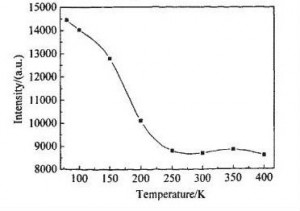With the development of LED products technique, LED lamps have been widely accepted all over the world. In lighting industry, color rendering index (CRI) is an important parameters. Most lighting standards have strict requests for CRI of LEDs. Currently, the immature LED CRI technique obstructs white LED lamps to be the mainstream in the lighting market.
Natural light is a kind of polychromatic light (a continuous distribution in light spectrum). LED white light is closed to natural light (has a wide continuous distribution in spectrum), laying a theoretical foundation for its color rendering capacity. The currently used white LED Lights chips are blue-ray LEDs coated with fluorescent powder. This technique was invented by Nichia Corp, an imitation of the traditional design concept and fluorescent lamps. However, this technique has innate defects: lack of blue-green rays and red rays and too much blue rays and yellow rays. This gives birth to a distorted CIR for LEDs. For some color, like blue and yellow, white LED rays will “exaggerate” them, making objects with these color look brighter than normal. On the other hand, for some red-colored objects, like apple, meat, white LED Tubes rays will make them look dimmer. These are actually distortions. Designers are striving to improve this white-ray LED technique to have a more real natural light.
Theoretically, white rays generated though blue-ray LED Street Light chips combined with fluorescent powder are really closed to natural light. But practice is different from theory. This difference is mainly caused by heat. Heat can impact an obvious effect on fluorescent powder. As we all know, high power LEDs will continuously generate heat during the work, meanwhile cooling sections will radiation this heat constantly. And equilibrium happens when LED high bay lamps work in stable situations. The higher the final temperature, the great the influence on fluorescent powder. Feature below illustrates the relation between light intensities and temperatures. Clearly, light intensity will drop with the increase of temperature. In other words, the light emitting capacity of fluorescent powder drops as temperature increases. The best working temperature for fluorescent powder is around 40 oC. When temperature reaches up to 120 oC, fluorescent powder will lose its capacity completely, which means there will no light sent out by LED lamps.

